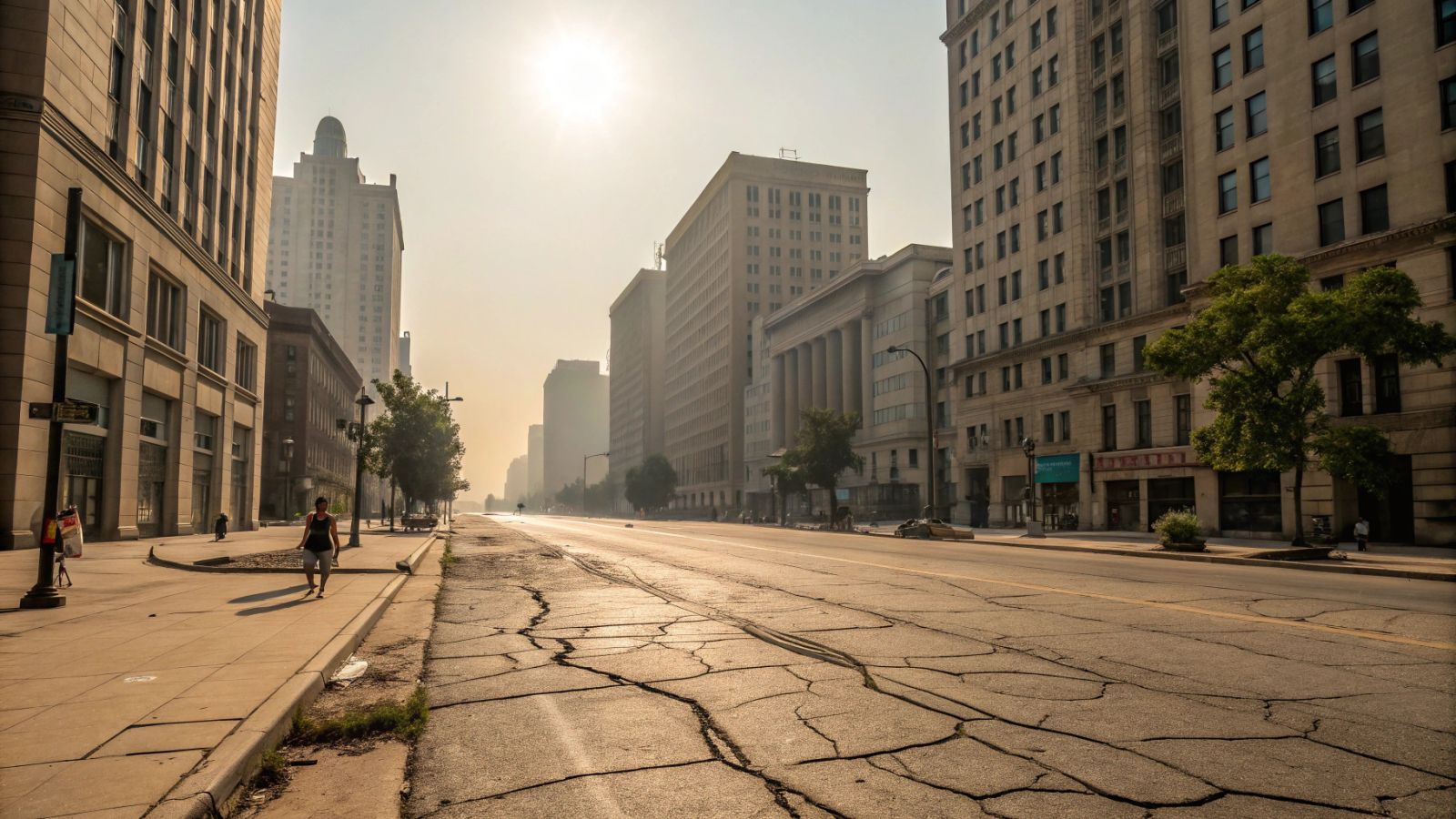Follow us on Google News (click on ☆)
In summer, when the heat settles in, we often notice that cities become even more stifling than the countryside. There can be several degrees of difference between a large urban city and the surrounding rural areas. Why? This phenomenon has a name: the urban heat island.

What is an urban heat island?
A heat island is an urban area where temperatures are significantly higher than in the surrounding rural zones. During heatwaves, this temperature difference can reach 5 to 10°C (9 to 18°F) between a city and the countryside!
This phenomenon is most noticeable at night: while fields and forests cool down quickly, cities remain warm, as if they were retaining the heat accumulated throughout the day.
Why do cities retain heat?
There are several reasons for this:
Concrete and asphalt: These materials absorb the sun's heat very well during the day... and release it slowly at night. In contrast, natural surfaces (grass, soil, forests) heat up more slowly and cool down faster.
Lack of vegetation: Plants and trees naturally cool the air through a process called evapotranspiration (they "sweat" a bit like us!). In cities, there is much less greenery.
Pollution and building density: Buildings trap heat and block wind. Additionally, human activities (traffic, air conditioning, industries) generate heat themselves.
What are the risks?
Heat islands increase health risks, especially during heatwaves: difficulty sleeping, heatstroke, thermal stress... Vulnerable individuals are most at risk.
Some cities are taking various actions, including:
- More trees, parks, and green roofs
- Use of light-colored materials that reflect sunlight
- Reducing car traffic and increasing urban shade
This is a way to make cities more breathable, even as temperatures rise.